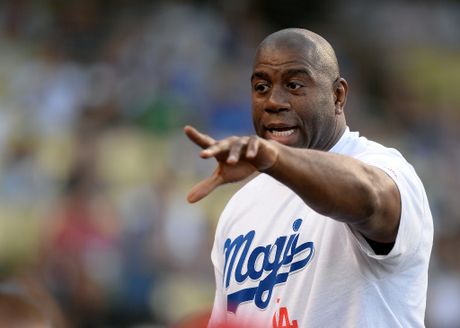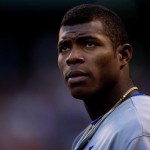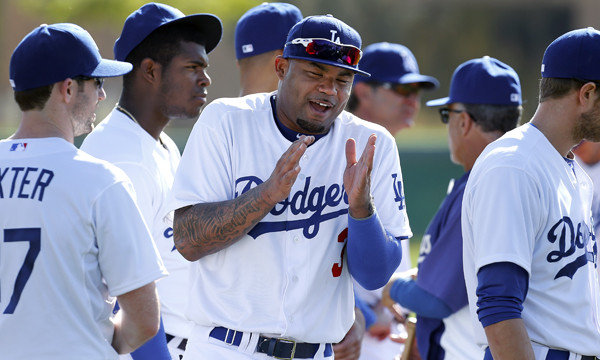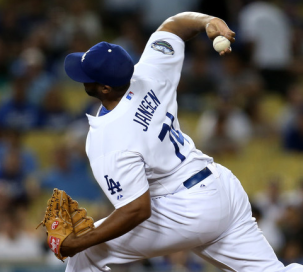Major League Baseball gave its players roughly one month to adjust to a new, literal interpretation of its “transfer rule.” Catch the ball, transfer the ball from glove to hand, make sure each of these steps is deliberate enough to be discerned on video review, and you’re good. That sounds simple. In practice, the rule demanded that fielders break a lifetime’s worth of hard-worn habits. Hanley Ramirez got burned on the call once this season, when he lost his grip on the ball after recording what looked like a forceout at second base. The umpire on scene ruled Ramirez didn’t make a catch in the first place.
Friday morning, the league officially changed its mind.
Beginning tonight, MLB announced that umpires will enforce the transfer rule according to a new standard — that is, the old standard. According to a league release, a catch or valid forceout/tag has occurred:
…if the fielder had complete control over the ball in his glove, but drops the ball after intentionally opening his glove to make the transfer to his throwing hand. There is no requirement that the fielder successfully remove the ball from his glove in order for it to be ruled a catch. If the fielder drops the ball while attempting to remove it to make a throw, the Umpires should rule that the ball had been caught, provided that the fielder had secured it in his glove before attempting the transfer. The Umpires will continue to use their judgment as to whether the fielder had complete control over the ball before the transfer.
It was too late for Ramirez, but it was nice to see the league act quickly. That said, there’s still at least one rule that the Dodgers would like to see clarified. Ramirez was involved in this one, too.
From my game story last night, in case you missed it, here’s what happened:
With Hanley Ramirez on third base and (Adrian) Gonzalez on first, (Yasiel) Puig hit a ground ball to Phillies third baseman Cody Asche. Asche fielded the ball deep in the third-base hole and threw to home plate, where Ramirez was out by several feet.
Or was he?
Mattingly popped out of the third-base dugout, asking for help. He demonstrated to the home-plate umpire, Mike DiMuro, what he saw from Philadelphia’s Ruiz: A catcher with both feet planted in front of home plate as Ramirez was bearing down.
According to the rule, which was ratified by MLB and the Players’ Association in spring training, “Unless the catcher is in possession of the ball, the catcher cannot block the pathway of the runner as he is attempting to score. If, in the judgment of the Umpire, the catcher, without possession of the ball, blocks the pathway of the runner, the Umpire shall call or signal the runner safe.”
The problem for Mattingly was that Asche delivered a perfect strike to Ruiz in plenty of time to retire Ramirez. Hunter Wendelstedt initiated a crew chief’s review and baseball’s two new rules for 2014 suddenly collided, an instant replay being used to determine whether a catcher illegally blocked home plate.
Three minutes and 18 seconds later, the call stood. Ramirez was out.
Just before the next inning, I saw Dodgers catcher Tim Federowicz in the dugout demonstrating how to block home plate to pitcher Josh Beckett. After the game, Federowicz was still upset and confused by the sequence of events.
“I honestly thought that call was going to be overturned,” he said. “The only thing in their favor is that (Ruiz) got that ball in plenty of time. He probably got it a good 10 feet before the play. That’s what the final decision was probably on. My whole thing is, why have the rule saying you can’t block the plate without the ball, and he blocks the plate without the ball?”
Here’s a still image, taken from the video of the play, that shows where Ruiz was stationed when he caught the ball (unfortunately I couldn’t grab an image just before Ruiz made the catch):

Whether Ruiz is illegally blocking Ramirez’s path to home plate represents a judgment call, too. Could Ruiz be more out of the way of the baseline? Of course. But, as noted at the time, Asche made an accurate throw. If Ruiz plants his mitt in the baseline and his body in foul territory to receive the throw, and Ramirez (who left on contact) sprints home at full speed and slides inside the baseline, Ruiz is in jeopardy of not being able to make the tag.
Maybe Wendelstedt factored this into his judgment. Rule 7.13 goes on to state that “it shall not be considered a violation of this rule if the catcher blocks the pathway of the runner in order to field a throw, and the Umpire determines that the catcher could not have fielded the ball without blocking the pathway of the runner.”
Watching the sequence in real time, Federowicz felt that Ruiz didn’t need to lay his right leg in the basepath in order to make the catch. Therefore, Ramirez should have been ruled safe.
“Hanley has nowhere to slide and he’s still out? I guess Hanley’s allowed to hit him in that situation,” Federowicz said. “But again, they scare all these runners from being able to do that. Nobody really knows the correct rule right now.”
Some bullet points for Arbor Day:
Continue reading “Daily Distractions: MLB clarifies its ‘transfer rule,’ but 7.13 is still baffling to Dodgers catcher.” »





